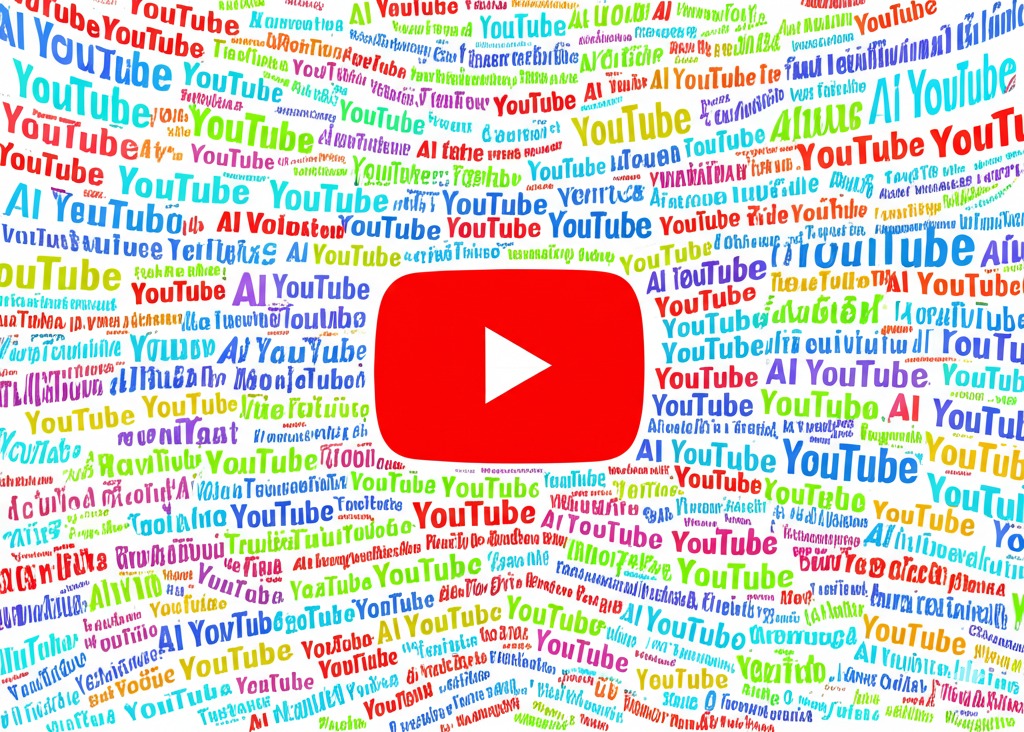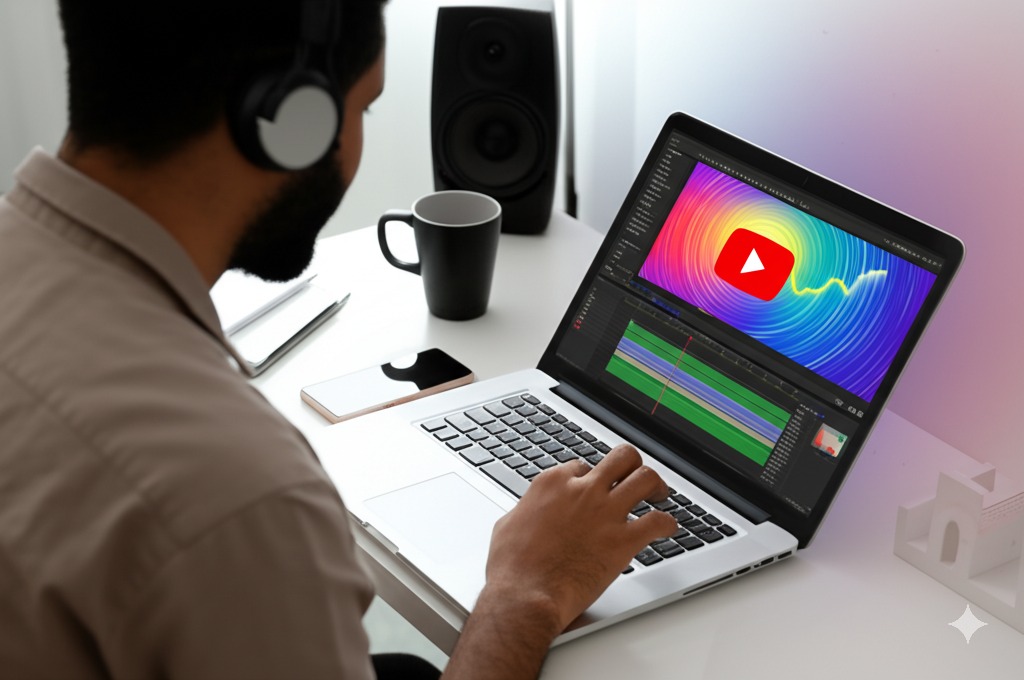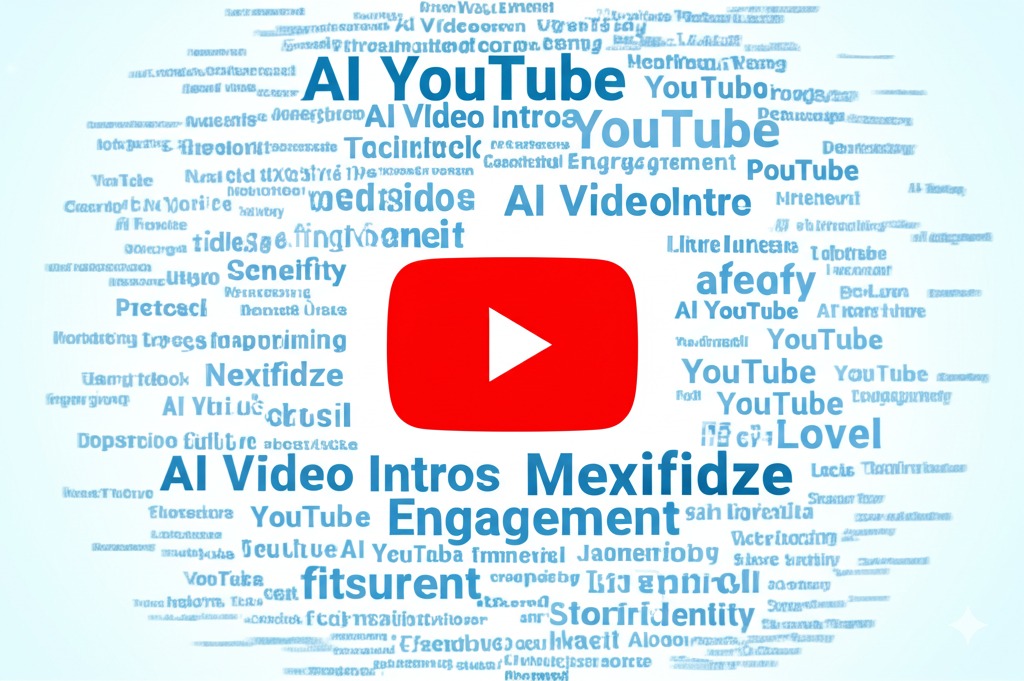
AI video intros for YouTube retention are smart computer-generated openings that grab viewers’ attention in those crucial first seconds of a video. These intros analyze what keeps people watching and use that data to create hooks that stop viewers from clicking away. Unlike manually created intros, AI versions test thousands of patterns from successful videos to find what works best for your specific audience. They can automatically adjust tone, pacing, visual elements, and messaging to dramatically reduce viewer drop-off in those first 15 seconds – the make-or-break moment when most people decide whether to keep watching or move on.

The Science Behind Viewer Retention on YouTube
The first few seconds of your video can make or break your success on YouTube. About 20% of viewers leave within the first 10 seconds if they’re not immediately hooked, and nearly half drop off by the 1-minute mark.
YouTube’s Algorithm and Retention Metrics
YouTube’s system loves videos that keep people watching. The algorithm tracks how long viewers stay on your videos and rewards content that holds attention with better rankings and more recommendations.
The platform looks at:
- Average view duration
- Audience retention graphs
- Skip rates during specific segments
- Re-watches of certain parts
Videos with strong YouTube retention optimization get shown to more people, creating a cycle of success. This is why those first seconds matter so much.
Psychological Triggers in Effective Video Intros
AI video intros for YouTube retention work because they use proven psychological triggers:
- Pattern interrupts – Unexpected elements that grab attention
- Curiosity gaps – Teasing information that viewers want to discover
- Open loops – Starting stories that viewers need to keep watching to complete
- Value previews – Quick glimpses of the useful content to come
These techniques trigger dopamine release and create what psychologists call “information-seeking behavior” – the desire to keep watching to satisfy curiosity.
Data Analysis: What the First 15 Seconds Reveal
Research shows the first 15 seconds of viewing behavior strongly predicts overall watch time. Videos with less than 50% retention at the 15-second mark rarely recover.
Video engagement metrics show that viewers make split-second decisions about:
- Is this relevant to what I was searching for?
- Does the creator seem authentic and trustworthy?
- Will this content deliver what the thumbnail/title promised?
- Is the production quality acceptable?
Creating strong intros addresses all these questions immediately.
AI Technology Transforming Video Introduction Creation
New technologies are changing how creators make those crucial first seconds count.
Natural Language Processing for Compelling Hook Writing
AI video intros for YouTube retention use NLP (Natural Language Processing) to analyze millions of successful video openings. These systems identify patterns in:
- Word choice and sentence structure
- Question formats that generate curiosity
- Statement types that create emotional responses
- Transition phrases that keep viewers engaged
The AI can then generate hooks customized to your video topic, audience, and style. This is similar to how AI text-to-speech for screencast tutorials analyzes successful voiceover patterns.
Computer Vision Analysis for Visual Hook Optimization
AI doesn’t just analyze words – it also studies successful visual elements using computer vision technology:
- Motion patterns that attract attention
- Color combinations that create emotional responses
- Shot composition that draws viewers in
- Face positioning and expressions that build connection
By combining text and visual analysis, AI for YouTube engagement creates openings that appeal to both the viewer’s ears and eyes.
Audience Segmentation and Personalized Intro Generation
The most advanced systems can create different intros for different audience segments:
- New vs. returning viewers
- Viewers from different traffic sources
- Age and demographic differences
- Viewers on different devices
This personalization increases relevance, similar to how voice SEO optimizes content for different search approaches.
Step-by-Step Implementation Guide for AI-Generated Intros
Ready to try AI video intros for YouTube retention for your channel? Here’s how to get started:
Gathering Performance Data to Train Your AI Models
Start by collecting data from your existing videos:
- Download your retention reports from YouTube Studio
- Identify your best and worst-performing intros
- Note the specific language, visuals, and structure used
- Tag videos by topic, audience, and purpose
This data becomes the foundation for your AI training. The more information you provide, the better your results will be.

Setting Up AI Tools for Intro Creation Workflows
Several tools can help with AI video intro generation:
- Script generation platforms like Jasper AI and Copysmith
- Visual template systems like Pictory and InVideo
- Comprehensive creators like Opus and Synthesia
When choosing tools, look for ones that integrate with your existing workflow and export in formats compatible with your editing software.
A/B Testing Frameworks for Optimizing AI-Generated Intros
To find what works best:
- Create 2-3 different AI-generated intros for the same video
- Upload them as separate but identical videos
- Run them as unlisted for 100-200 views each
- Compare the retention graphs at the 15-second mark
- Use the winning intro style for your public video
This testing approach helps you refine your YouTube algorithm retention strategies over time.
Predictive Retention Modeling with Real-Time Adaptation
The newest AI video intros for YouTube retention go beyond creation – they actually predict how well your intro will perform before you publish.
These systems analyze your intro against thousands of data points from successful videos in your niche. They can estimate your expected retention rate and suggest specific improvements before you go live.
Some advanced platforms can even adjust your intro automatically after publishing based on real-time performance data, similar to how AI text-to-speech tools for healthcare adapt to user responses.
Use Cases with Real Examples
News and Media: Retention-Optimized Breaking News Intros
Reuters implemented AI video intros for YouTube retention for their breaking news coverage. Their system analyzes trending topics and viewer interest signals to create customized intros for each story.
The results were impressive: a 32% increase in average retention and 47% more videos watched per session. The AI excels at quickly identifying what aspects of a news story viewers care most about.
Source: Reuters Institute Digital News Project
Educational Content: Knowledge Gap Intros
Khan Academy used AI content optimization for YouTube to identify and address knowledge gaps in their video intros. The system analyzes common questions and misconceptions about topics, then ensures the intro addresses these points.
This approach increased course completion rates by 28% and improved student confidence scores by 35%. The AI intros help students feel that the content will specifically address their learning needs.
Source: Khan Academy Research on AI Video Engagement
Entertainment Channels: Emotion-Triggering Intro Sequences
MrBeast’s team uses sophisticated hook creation techniques powered by AI to achieve their industry-leading retention rates. Their system tests emotional triggers and visual patterns across thousands of sample viewers.
Their data shows that AI-optimized intros have helped increase first-minute retention from 71% to 83% on average – a massive improvement that translates to millions of additional view minutes per video.
Source: Tubefilter MrBeast Strategy Analysis
Product Reviews: Comparative Tension in AI-Generated Intros
MKBHD implemented AI testing for tech review video intros, focusing on creating what they call “comparative tension” – highlighting key product comparisons that viewers most want to see.
By using AI tools for analyzing and improving YouTube audience retention rates, they improved average view duration by 37% and increased comment engagement by 54%.
Source: Creator Handbook Tech Review Optimization
Advanced Techniques for AI-Enhanced Video Intros
Voice Modulation and Pacing Optimization
AI analysis shows that voice patterns greatly impact retention. Systems now:
- Analyze successful creator voice patterns
- Recommend ideal speaking speed and tone
- Suggest emphasis points and pauses
- Flag potential engagement drops
These voice optimizations work similarly to AI voice generators for radio commercial production, adapting proven patterns for YouTube.

Dynamic Intro Sequencing Based on Viewer History
Advanced AI video intros for YouTube retention can show different intros to different viewers:
- New viewers might see a channel introduction
- Returning subscribers might skip straight to content
- Viewers from search get intros focused on their query
- Social media visitors get context-specific openings
This personalization creates a more relevant experience for each viewer type.
Emotion Detection and Matching in Intro Creation
AI can now analyze the emotional content of your video and create intros that match or set up that emotional tone:
- Educational videos might start with curiosity triggers
- Entertainment content often uses excitement or surprise
- Tutorial videos benefit from problem-solution framing
This emotional alignment creates a cohesive viewing experience that keeps people watching.
Measuring Success: KPIs for AI-Generated Video Intros
Beyond Retention: Holistic Performance Metrics
While retention is important, other metrics matter too when measuring AI video intros for YouTube retention:
- Subscriber conversion rates
- Comment engagement
- Click-through on cards and end screens
- Social sharing behavior
- Return viewer percentage
The best AI systems optimize for a balanced set of engagement signals.
Benchmarking Systems for Intro Performance
Compare your intro performance against:
- Your channel’s historical average
- Similar channels in your niche
- YouTube overall averages
- Your specific video goals
Setting clear benchmarks helps you track improvement over time.
Attribution Modeling for Intro Impact on Channel Growth
Advanced analytics can help isolate how much your improved intros contribute to overall channel growth:
- Correlation between intro retention and subscriber growth
- Before/after analysis when implementing new intro strategies
- Segment analysis of viewers who stay vs. leave during intros
This data helps justify the time and resources spent on intro optimization.
Ethical Considerations and Best Practices
Authenticity vs. Optimization: Finding the Balance
While AI video intros for YouTube retention are powerful, they shouldn’t make your content feel fake or manipulative. The best approach:
- Use AI for structure and optimization guidelines
- Maintain your authentic voice and style
- Ensure intro promises match the actual content
- Test with real viewers for feedback
Transparency with Your Audience About AI Usage
Being open about your use of AI tools builds trust:
- Consider occasionally mentioning your process
- Focus on how AI helps you deliver better content
- Remain the human decision-maker in the process
- Use AI as a tool, not a replacement for your creativity
Avoiding Clickbait: Ethical Boundaries in AI-Generated Hooks
Effective doesn’t mean deceptive. Ethical AI video intro generation:
- Creates curiosity without misleading
- Highlights genuine value, not false promises
- Respects viewer time and attention
- Delivers on the expectations set in the intro

FAQs About AI Video Intros for YouTube Retention
How does AI determine what type of intro works best for specific content categories?
AI analyzes thousands of successful videos in your category, identifying patterns in the intros of videos with high retention rates. It looks at factors like pacing, hook type, visual elements, and language patterns, then recommends approaches proven to work for your specific content type.
What’s the ideal length for an AI-generated video intro in 2025?
For most content categories, the optimal intro length is now 8-12 seconds. However, educational content can sometimes benefit from slightly longer intros (up to 15 seconds) if they establish clear learning outcomes. Entertainment content often performs best with shorter 5-8 second hooks that jump right into the action.
How often should creators update their intro strategies based on AI insights?
Most successful creators review their YouTube retention optimization strategies quarterly, but implement smaller AI-suggested tweaks monthly. Significant platform updates or major shifts in audience demographics should trigger immediate strategy reviews regardless of your regular schedule.
Can AI-generated intros help recover underperforming YouTube channels?
Yes, channels that have seen declining performance often benefit most from AI intro optimization. Case studies show that implementing data-driven techniques for optimizing first 15 seconds of YouTube videos can improve retention by 25-40% for previously struggling channels, often triggering positive algorithm changes within 4-8 weeks.
Conclusion: Implementing Your AI Intro Strategy
AI video intros for YouTube retention are changing how successful creators approach those critical first seconds. The technology continues to improve, making it accessible to creators of all sizes.
To get started:
- Analyze your current intro performance
- Choose an AI solution that fits your workflow
- Test different approaches systematically
- Refine based on real audience data
Remember that even the best AI is a tool to enhance your creativity, not replace it. The most successful creators use AI for YouTube engagement to amplify their unique voice and style, not to mask it.
By combining your authentic approach with data-driven optimization, you can create intros that hook viewers from the first second and keep them watching all the way through.

